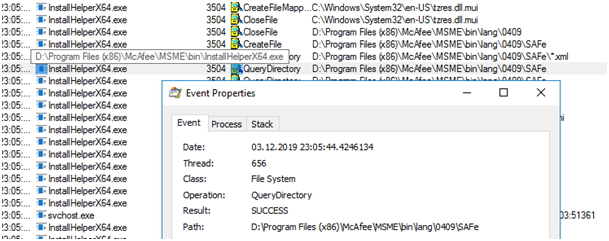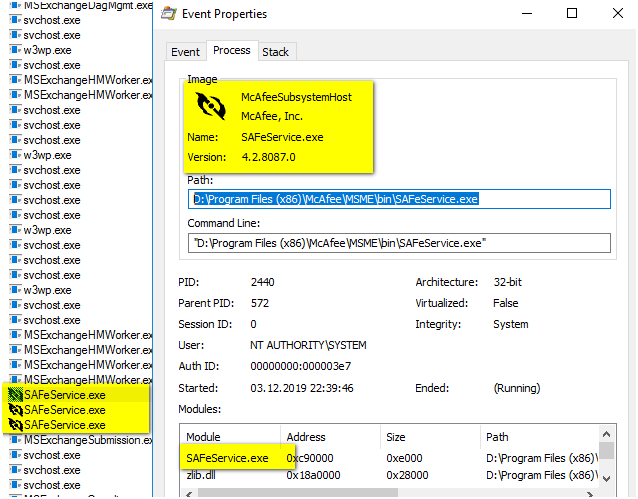Exchange 2016
McAfee Security for Exchange 8.6 SP2 (Safeservice.exe, RPCserv.exe (two instances), Postgres.exe (multiple instances))
D:\Program Files (x86)\McAfee\MSME\bin\SAFeService.exe
Server 2016
Source was: C: had no space in test lab server
If you see random Files with 96’201’998 (96MB) size under “C:\Windows\Temp\SAFe\” on your Exchange 2013/2016 those are from McAfee Security for Exchange 8.6. The shown server was a test lab running for long times a space on c: Drive did run out because it was unattended. You also see the “SAFe” directory under “D:\Program Files (x86)\McAfee\MSME\bin\lang\0409\SAFe”
Problem is finding something about thise issue since 99% google result end up in is it “safe” to delete “c:\windows\temp” 😉
We used procmon.exe from Systernals to see what generates the files since the content is encrypted. You always have a bad feeling if you
See such files since Ransomware so maybe this helps someone once.
(From a first peek and moving files you think this is some kind of breach. Not very smart done by Mcafee…)



This event (IF your send E-Mail Alerts) should help too.
Since the Mcafee Security for Exchange OFTEN throws too much errors (RPC Crash > and it’s back) people often turn those reports OFF we have seen in Mcafee Forum.
Loading the Anti-Virus Engine failed on ’11/01/2018 19:19:53′.
1. Check whether the Product Update Information in the user interface is correct.
2. Check whether the corresponding folders with respect to DATs/Anti-Virus Engine version exists in the installation\\bin directory.
3. contact McAfee Technical Support.


 Click on the Category button to get more articles regarding that product.
Click on the Category button to get more articles regarding that product.